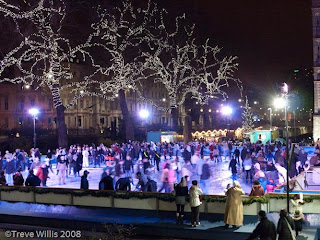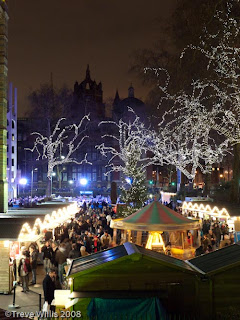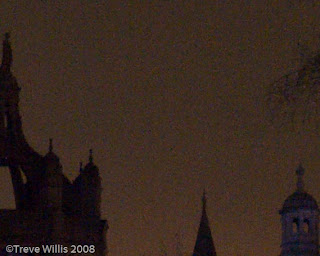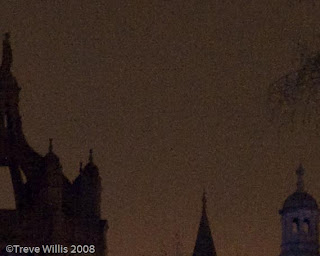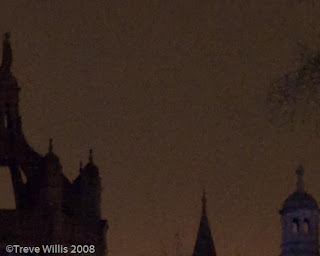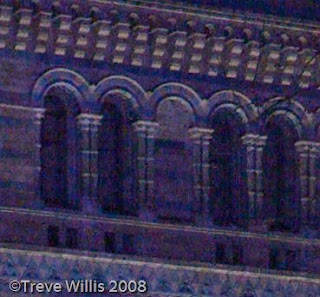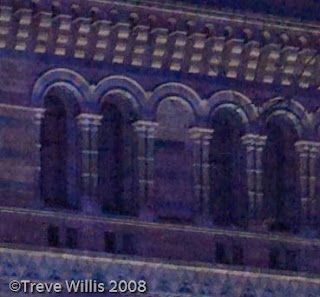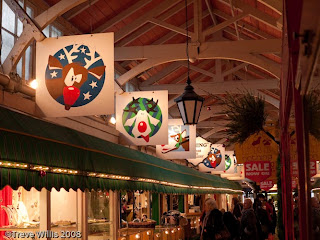I picked up a Panasonic 45-200mm lens for my G1 on eBay at about half the current UK shop price. Here are my first impressions of the lens used with the G1.
The official name for the lens is the “Lumix G VARIO 45-200mm F4-5.6 ASPH Mega O.I.S” with a model number of “H-FS045200” – I will simply call it the 45-200 lens from here on. You can find out full details about it on Panasonic’s web site – here. I have extracted the key specifications and they are shown in the screen shot below. For comparison the details for the 14-45mm lens can be found – here.

For me the key specs are the size and weight, the focal length range with reasonably fast apertures, and that it has image stabilisation built in (since the G1 does not have it built into the camera body) and that it focuses quickly, accurately and quietly. Image quality is of course the key thing that I have to test for myself, along with the focusing requirements.
First Impressions
The first impression of the lens when I took it out of the box was how small and light it was. For a 90-400mm 35mm equivalent f4-5.6 lens it is tiny, as you can see in the photo below of it with its lens hood in place, compared with a Canon 40D + 70-200mm f4 IS L lens – the comparative weights of these set ups are 870g for the G1 and 1,850g for the Canon, making the G1 set up less than half the weight.
This ticks the size and weight box very nicely.

A quick look at and feel of the lens before putting it on the camera showed that it is from the same family as the 14-45mm lens that I already have. The lens mount is metal, the finish (colour and feel) is similar and the overall impression is of a good quality lens, although not comparing to a Canon L zoom (nor in size or weight either). The zoom and focus rings are similar and work the same way on the two lenses. They share the same 52mm filter size.
Unlike the Canon 70-200 mm L lens that I have the lens barrel does extend when you zoom from 45 to 200mm, extending the length of the lens from 99mm (152mm inc lens hood) to 136mm (189mm inc lens hood) (measurements taken from the camera body to the front of the lens or lenshood). Like the 14-45 lens the 45-200mm lens’ focusing is effectively silent, with no observable movement of any element of the lens when it focuses; so it must be an internally focussing design. The focus speed is good enough (much, much quicker than a Canon 70-300mm USM lens I once had).
Image Quality
As always I have only used RAW files to capture the images so any comments I have on image quality reflect what I see in RAW files in, or printed through, Lightroom 2.2.
The first set of images I took were in good light and one of my cats obliged by sitting still long enough to be photographed. When I looked at them I was pleasantly surprised and happy with the results. The cat’s whiskers and fur was nicely detailed and the colours were clear and punchy - see below taken at 200mm (400mm 35mm equivalent) with stabilisation turned on at max aperture of f5.6, 1/640thsec, ISO 200 - the photo was taken through leaves so there are some areas with out of focus leaves in the foreground .

Image Stabilisation
The performance of the Image Stabilisation on this lens is much more important to me than on the 14-45mm as the longer focal lengths combined with the temptation to hand hold the combination could be an excellent recipe for blurred photos. Since this is likely to have a big impact on image quality I looked at this first.
I have done some real world tests hand holding the lens at 200mm with the IS turned on and off to test its performance at both long and relatively short range. I have also compared it with a Canon 70-200mm f4 IS L lens on a 40D – this lens is reputed to be one of the sharpest mid-range zoom lenses available, so it might be an unfair test.
In each case I have set the camera to shutter speed priority and varied the shutter speed taking whatever aperture that gave. In all cases I started at 1/500th Sec and worked my way down in single increments to around 1/40th or 1/30th sec. keeping the ISO constant. With the wide range this covers the aperture has usually gone from f5.6 to the minimum available for the lens (f22). I did not use any additional means of support – just my two hands and as good technique as twenty years of taking photos has taught me.
I looked at the images at 100% in Lightroom using its compare function as well as printing off A4 prints.
How effective is the image stabilisation?
One of the first things to say is that I think that some of the image softness I saw was probably due to diffraction limiting rather than out and out image shake.
With the x2 multiplication factor on the G1 I would expect to have to use at least 1/400thsec with the lens at 200mm. In all cases 1/500thsec produced a sharp image. In the long range test with image stabilisation turned on the image started looking shaky at 1/160thsec, but I was able to get some reasonably shake free images down to 1/80thsec on and off.
With stabilisation turned off I was only able to get shake free images at 1/500thsec, with some at 1/400thsec. Below that no photos taken at 1/250thsec or less was ever shake free.
So for reliable shake free photos the stabilisation system seems to be good for about 1 stop, but for occasional shake free images it seems to offer a bit over 2 stops (the difference between 1/400th and 1/80thsec. This is a bit less than I was expecting, and may be due to the light weight of the overall system compared with the heavier DSLRs that I am used to using, giving it less inertia to counter image shake inducing movements.
As I mentioned I ran a parallel test with the Canon 70-200mm f4 IS L lens on my 40D… To make the test fair I reduced the focal length on the 45-200mm to 155mm (giving a 35mm focal length equivalent of 310mm on the G1 vs the 320mm on the 40D).
I have to say that the image sharpness and contrast from the Canon combo is noticeably better straight out of the camera than from the G1 combo, but until I looked at the Canon images on screen I was quite happy with the G1’s. After tweaking in Lightroom and printing them, however, they looked very similar. The Canon images still looked more contrasty and the colours a little more punchy, but that might be because I am simply more used to working with Canon images than those from the G1.
At 155mm with stabilisation turned on the G1 was shake free down to about 1/125thsec; with it turned off I could manage shake free shots down to 1/250thsec, but also some shaky images at 1/400thsec – this equates to about a one stop advantage again, although it makes images at all speeds more reliably shake free; giving roughly a 2½ stop advantage with varying reliability.
The performance of the Canon combo was, however, much more clear cut and impressive. At 200mm the stabilisation system produced a noticeably more stable image in the viewfinder. In Lightroom and in print the stabilisation worked all the way down to 1/60thsec, compared to 1/250thsec with stabilisation turned off, although I was quite capable of producing shaky images at 1/320thsec. This equates to at least a 2 stop advantage, with up to the 4 stops claimed by Canon on occasion; so about a stop better than for the G1 combo.
General image quality
I looked in detail at the images I printed at A3 from the G1 at 155mm and 200mm, and the Canon at 200mm – all shot at 1/500thsec with stabilisation turned on and one stop down from their maximum apertures at ISO 200 to make sure that the image quality was as good as normal real life was going to produce, to get a feel for the image sharpness of the lens.
Comparing the Canon at 200mm and the G1 at 155mm showed them to be very similar. Both were sharp in the centre and held it to the edges – so a pretty good result. At 200mm on the G1 images at the centre were reasonably sharp, but softened towards the edges. This was not, however, dreadful and looking at the prints at a normal viewing distance was not really noticeable.
During the stabilisation trials I felt that I was seeing image softening due to diffraction effects at small apertures rather than image shake. I would have to run a tripod based trial to determine what the diffraction effect limits are for this lens, but that is rather missing the point of this camera.
My conclusions based on image quality are that this is a very useable lens. At the long focal length extreme the image quality is not as good as at mid-range – this if often the case with zooms and does not deter me from using for images that are likely to be printed to A3.
Conclusion
I am very happy with the lens. Image quality shows up well compared with a top of the range Canon zoom lens of similar specifications (albeit with a shorter focal length range). It focuses adequately swiftly, handles nicely and is a small, neat package to carry around – I shall be keeping it. Read more...
